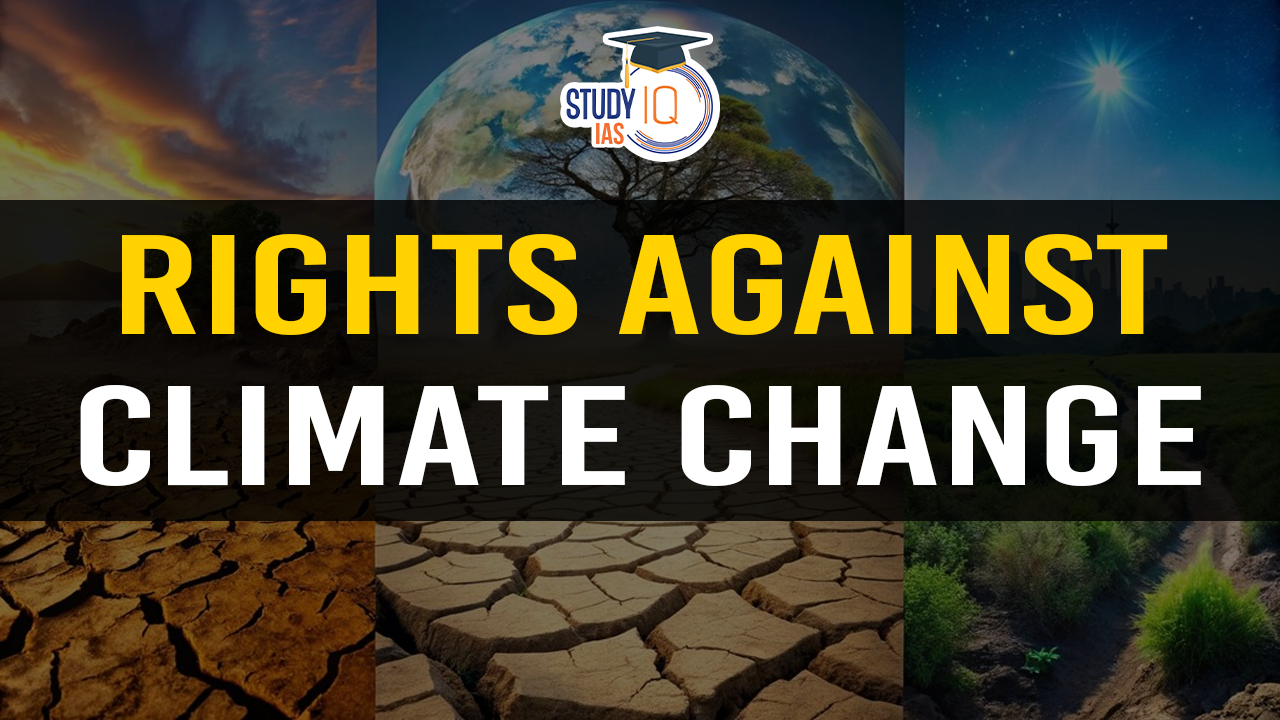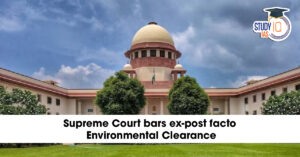Table of Contents
Context: In April 2024, the Supreme Court of India in the case of M.K. Ranjitsinh and Others vs Union of India recognized a human right against the adverse impacts of climate change.
More In News
- The core issue involves protecting the Great Indian Bustard, an endangered bird, from adverse impacts of solar and wind energy projects.
- The Court’s decision has been criticised for presenting decarbonization and biodiversity protection as adversarial, potentially prioritising the former over the latter.
- The decision has sparked diverse reactions—some view it as a victory for climate action, while others criticise it for failing to protect endangered biodiversity.
- The court in the final decision suggested adopting a “just transition.”
About Just Transition
- Just transition aims to make climate action fair and inclusive, ensuring that the burdens and benefits of decarbonization are distributed equitably.
- The concept began in the 1970s to protect workers affected by environmental regulations and was later incorporated into international climate agreements like the Paris Agreement in 2015.
- Traditionally, it focuses on vulnerable human communities such as indigenous people, women, children, and minorities, but not on the non-human environment.
Advantages of a Just Transition Framing in the Case
- Equitable and Inclusive Climate Action: The Court is encouraged to facilitate climate action that does not disproportionately impact any community.
- Just transition allows for a more holistic approach, where the protection of biodiversity can coexist with decarbonization efforts.
- Introducing Non-Human Entities: This case provides an opportunity to expand the scope of just transition to include the non-human environment, such as endangered species.
- Drawing on eco-centric jurisprudence, the Court could recognize the rights of nature, thereby incorporating the non-human environment into the just transition framework.
- Boosting Just Transition Litigation Research: The application of just transition in this case could spur research into just transition litigation, particularly in the context of renewable energy projects in India.
- It could help map out and recognize just transition cases that are currently overlooked or not categorised as such in existing databases.
Implications for Future Climate Litigation
- Global Context: As countries strive for net-zero emissions, just transition litigation is expected to rise.
- In India, there are currently 20 ongoing disputes related to renewable energy projects, many of which involve equitable sharing of decarbonization burdens and benefits.
- Legal and Litigation Framework: Adoption of just transition could guide future climate litigation, ensuring that climate action is both fair and effective.
- Renewable Energy Projects: The case is not an anti-energy transition but aims to ensure responsible and informed operation of renewable energy projects, potentially influencing how power transmission lines and other infrastructural elements are implemented.
- Research and Policy Development: Could catalyse necessary research and policy adjustments to better understand and implement just transition principles in climate law and litigation.


 Elon Musk’s America Party: A New Chapt...
Elon Musk’s America Party: A New Chapt...
 Bihar Assembly Election 2025: Complete G...
Bihar Assembly Election 2025: Complete G...
 Supreme Court Bars Ex-post facto Environ...
Supreme Court Bars Ex-post facto Environ...





















